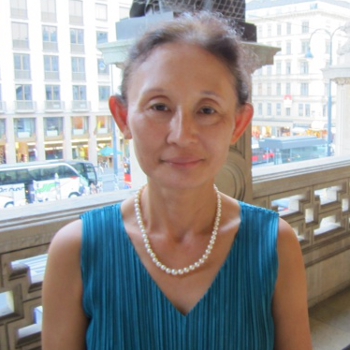Adrian Noble’s 2019 production of Otello moves the action of the tragic tale of a Moorish general to circa 1900, stripping it of its historical context. The crowd in the opening harbour scene is dressed in black and white period costume, the soldiers in uniform, the women in long dresses and hats. The set consists of movable walls that move, open and close to suggest each scene, with clever, atmospheric lighting by Jean Kalman and blocking. Scenes such as harbour square, Iago’s barrack, Otello’s private office, garden, palace hall and, finally, bedroom appear in quick succession as the set is transformed to move the drama on without interruption. Dick Bird's sparse set has minimum props, emphasising the inner world of Otello and his emotional disintegration, fitting the director’s concept of the opera as a psychological thriller of a troubled character.
Tenor Jonas Kaufmann, with his dark timbre and brooding stage presence, seems particularly appropriate to depict an insecure, tormented and self-destructive war hero in this production. Otello’s opening “Esultate!” salvo – a challenging calling card – was managed well, and Kaufmann paced himself throughout the evening to deliver an honorable and credible, if not unforgettable, performance. His tendency to use soft voice became more pronounced as the evening went on, but he delivered Otello's big monologues in Acts 2 and 3 with assured and nuanced mastery, with pleasing legato.
Ludovic Tézier’s Iago has none of the inner complexity of Kaufmann’s Otello. This Iago is a manipulative and scheming villain, not so purely evil a creature as he describes in his soliloquy. Tézier’s booming baritone is flexible enough to convey Iago’s envy, anger and feigned sympathy with ease and authority. Otello and Iago’s duet to conclude Act 2 was a clear highlight of the evening, their voices soaring high and blending with seamless, thrilling power. Their onstage chemistry was clear, as their natural and easy interactions indicated. One might have wished for a bit more sneer and bite, but Tézier’s elegant and smooth delivery was a pleasure to hear.
Rachel Willis-Sørensen, an American soprano very much in demand in Europe as Verdi heroines with her large and clear voice, took some time to warm up. Her Act 1 duet with Kaufmann lacked a sense of romance and longing, failing to convey poignancy of the tragedy to come. Her singing became more confident and soulful as the evening progressed, and she delivered Desdemona’s two devastating Willow Song and Ave Maria full of emotional vulnerability mixed with quiet dignity. Smaller roles were well cast and sung, the standouts being Szilvia Vörös' Emilia, Bekhzod Davronov’s Cassio and Leonardo Neiva’s Montano.
It was unfortunate that there were some uncoordinated moments between orchestra and chorus in Act 1, perhaps due to lack of rehearsal time. The opening storm scene with the thundering orchestra and chorus, however, was performed with breathtaking volume and propulsion, setting the stage for the ensuing drama. Alexander Soddy conducted the orchestra with youthful energy combined with thoughtful interpretation of quiet and contemplative moments. He handled interludes and transitions with expert deftness, never breaking the musical flow to bring out the brilliant masterpiece Verdi composed towards the end of his long career.




